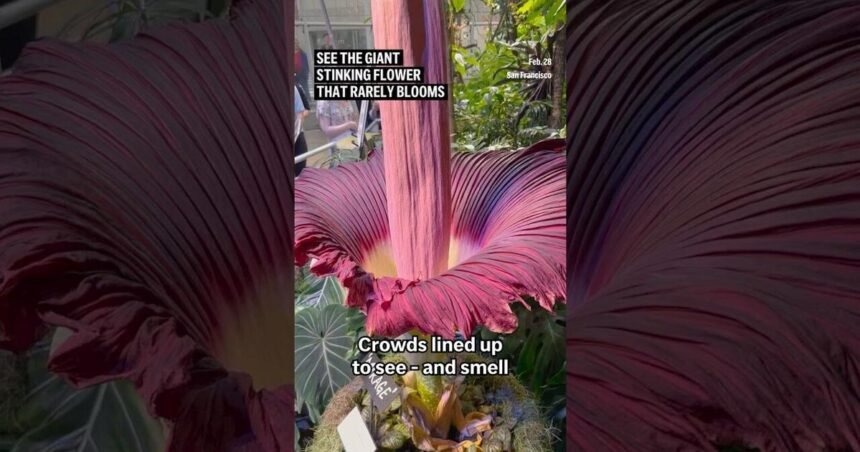San Francisco’s California Academy of Sciences witnessed a surge in visitors as they lined up to experience the rare and pungent bloom of the corpse flower named Mirage. This marked the first time Mirage has bloomed since being donated to the academy in 2017. Since 2020, it has been a prominent attraction in the museum’s rainforest exhibit.
Corpse flowers, also known as titan arums, are renowned for their foul odor, likened to that of rotting flesh, which emanates during their brief blooming period. Despite the repulsive scent, they attract scores of curious onlookers eager to witness this unique botanical event.
Mirage’s bloom drew attention not only for its olfactory allure but also for the rarity of the occurrence. The plant’s blossoming is an infrequent event, often happening only once every few years, making each bloom a highly anticipated spectacle.
The California Academy of Sciences, renowned for its educational exhibits and scientific research, provided a unique opportunity for visitors to witness the wonders of the natural world up close. The bloom of Mirage served as a reminder of the diversity and complexity of plant life and the importance of conservation efforts to preserve such marvels for future generations.
Despite the unpleasant smell, visitors were captivated by the sight and intrigued by the botanical phenomenon. Many took the opportunity to capture photographs and share their experiences on social media, spreading awareness of the rare bloom and drawing even more curious spectators to the museum.
Mirage’s bloom also highlighted the significance of botanical collections and research institutions in advancing our understanding of plant biology and ecology. The California Academy of Sciences plays a crucial role in this endeavor, serving as a hub for scientific exploration and public engagement with the natural world.
As visitors marveled at Mirage’s remarkable bloom, they gained a newfound appreciation for the wonders of nature and the importance of preserving biodiversity. The event served as a reminder of the fragility of our planet’s ecosystems and the need for collective action to protect and conserve our natural heritage for future generations.
